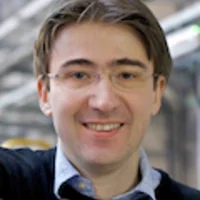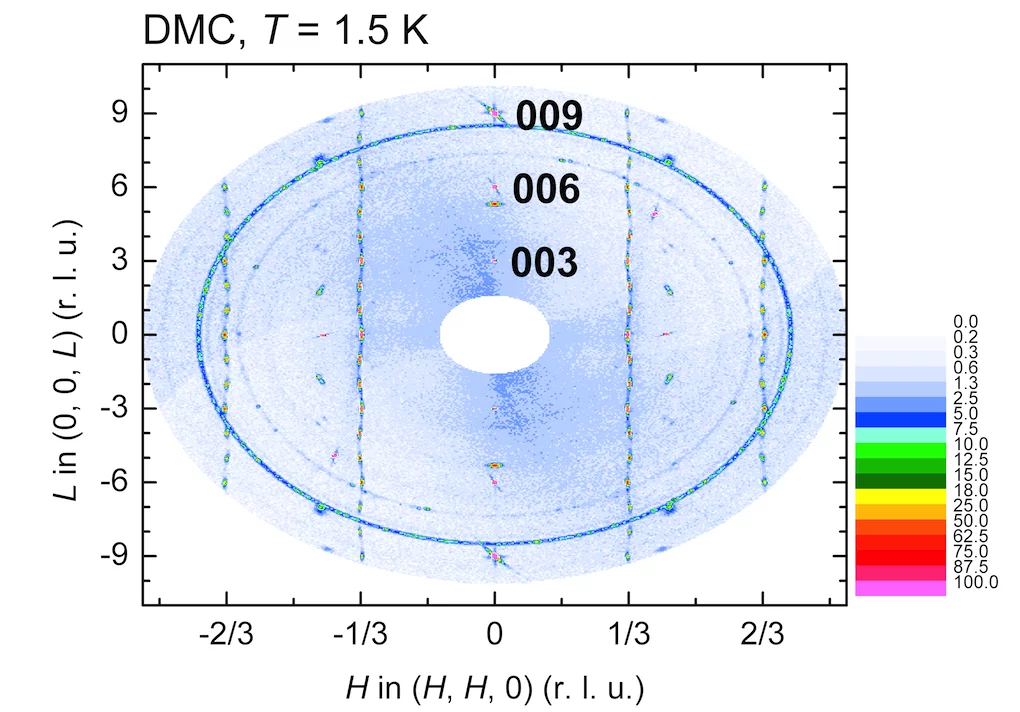Project details
Scientific Background
Materials which exhibit both an ordered magnetic phase and a spontaneous polarization are known as multiferroics. When the magneto-electric coupling is strong the multiferroic phase can be influenced both through an electric and magnetic field. Realized applications for multiferroic materials include sensors for magnetic fields and transducers. The real potential for multiferroics will, however, be in information technology. Concepts for a new kind of non-volatile memory called MERAM [1] could be implemented quickly and would find large scale application due to its large potential in energy efficiency. An even greater impact can suitable multiferroics have in the field of spintronics [2], where magnetic switching through voltage can compete with spin-torque transfer [3] and for instance allows the realization of spin-filters. The spintronic application might also trigger the migration from two-state electronics to quaternary states, which already have been demonstrated again with multiferroic materials [4].However, the number of multiferroic materials is relatively small and it has been considered that the coexistence of magnetic order and ferroelectricity is mutually excluded [5]. Further, the known multiferroics are often weakly coupled and therefore not easily tunable through both electric and magnetic field. One of the best chances to find a strongly spin-charge coupled multiferroic seems to be within the new class of geometrically frustrated, Delafossite (CuFeO2) and iso-structural compounds as CuCrO2 in which multiferroicity occurs through p-d hybridization, a concept first introduced by T. Arima [6]. The p-d hybridization is tightly bound to the magnetic structure, a proper-screw magnetic spiral. However, the evolution of the magnetic structure and the electric polarization in applied fields is still ambiguous. Based on recent investigations on the magnetic structure [7] and excitations [8] it is assumed that the role of the interlayer exchange interaction in CuCrO2 (and probably in other Delafossite-derived compounds) is crucial for the multiferroic behavior but its importance has not been adequately considered.
The main reasoning in this project is that through aimed influence on the interlayer exchange interaction in delafossite-type compounds it will be possible to evaluate clearly the role of the exchange in the spin-charge coupling. Moreover the investigation of possible substitution of the unmagnetic Cu-layers through other 3d elements might lead the way to possible new multiferroic compounds. The investigation into new delafossite derived multiferroics will be realized in close cooperation with the Laboratory for Developments and Methods (LDM) at the Paul-Scherrer Institut (PSI).
Recent Results
In order to analyze the effects of an electric field a CuCrO2 single crystal was prepared with gold sputtered electrodes on parallel [-110] faces. The crystal was glued in HHL scattering geometry on a sapphire single crystal plate and the electric connections were realized with silver paste. The thus prepared sample stick was mounted in a standard orange cryostat on DMC. The experiment used an incident wavelength of 2.45 Å. The sample was cooled from 30 K to 1.5 K first without field and a second time with an applied voltage of 3.5 kV. Both times a full reciprocal map at 1.5 K was recorded and the field-cooled result is shown in Fig. 1. The full map confirms the existence of the magnetic structure according to the proper-screw spiral with the propagation vector τ = (0.329, 0.329, 0) [7] both in field- and non-field-cooled condition.
However, in the detailed section along L shown in Fig. 2 small differences emerge. The magnetic structure in CuCrO2 has the benefit that to each magnetic reflection its generating propagation vector (or domain) can be unambiguously assigned [7]. With the application of an electric field the domain with the propagation vector perpendicular to the electric field (L = 0, ±3, ±6, …) is de-populated and the two domains which enclose a 30° angle between propagation vector and electric field are populated. Surprisingly, the results show that the domains cannot be fully de-populated, disagreeing with assumptions based on macroscopic measurements. Apparently, an additional force equilibrates the domain population at the phase transition. A candidate is the ferromagnetic interlayer exchange and it is therefore planned to repeat these studies with both electric and magnetic field applied.
References
- [1] I. Zutic, J. Fabian, S. Das Sarma, Rev. Mod. Phys. 76 (2004) 323
- [2] M. Bibes, A. Barthélémy, Nat. Mat. 7 (2008) 425
- [3] W. Eerenstein, N. D. Mathur, J. F. Scott, Nature 442 (2006) 759
- [4] M. Gajek, M Bibes, S. Fusil, K. Bouzehouane, J. Fontcuberta, A. Barthélémy, A. Fert, Nat. Mat. 6 (2007) 296
- [5] N. A. Hill, J. Phys. Chem. B, 104 (2000) 6694
- [6] T. Arima, J. Phys. Soc. Jpn. 76, 073702 (2007)
- [7] M. Frontzek, G. Ehlers, A. Podlesnyak, H. Cao, M. Matsuda, O. Zaharko, N. Aliouane, S. Barilo S. V. Shiryaev, J. Phys.: Condens. Matter 24 (2012) 016004
- [8] M. Frontzek, J. T. Haraldsen, A. Podlesnyak, M. Matsuda, A. D. Christianson, R. S. Fishman, A. S. Sefat, Y. Qiu, J. R. D. Copley, S. Barilo, S. V. Shiryaev, G. Ehlers, Phys. Rev. B 84 (2011) 094448



